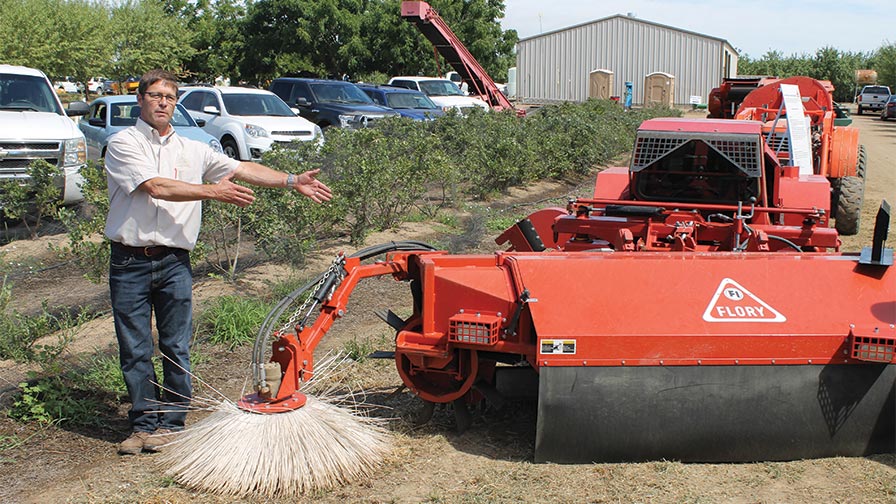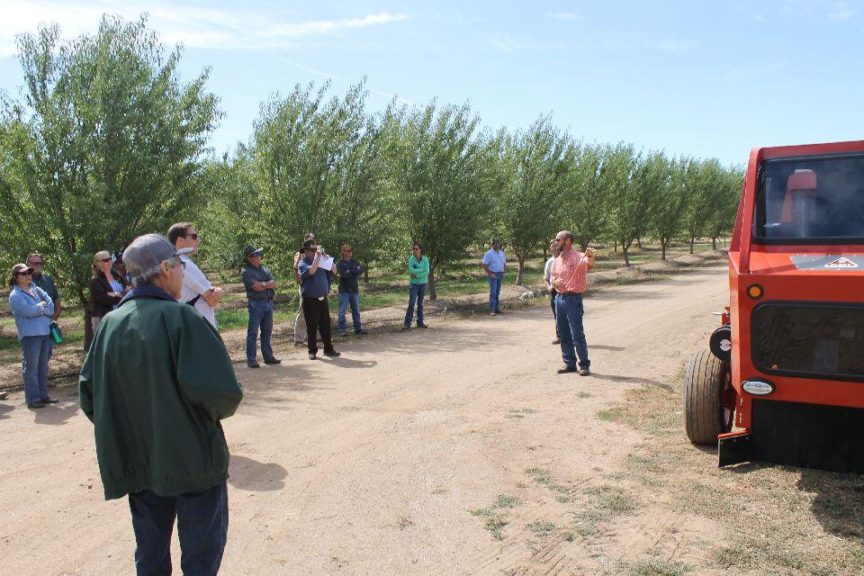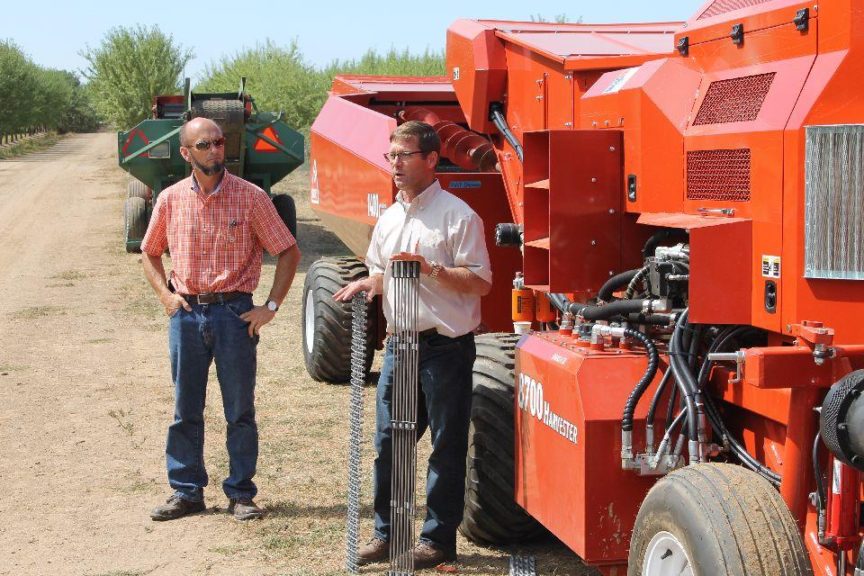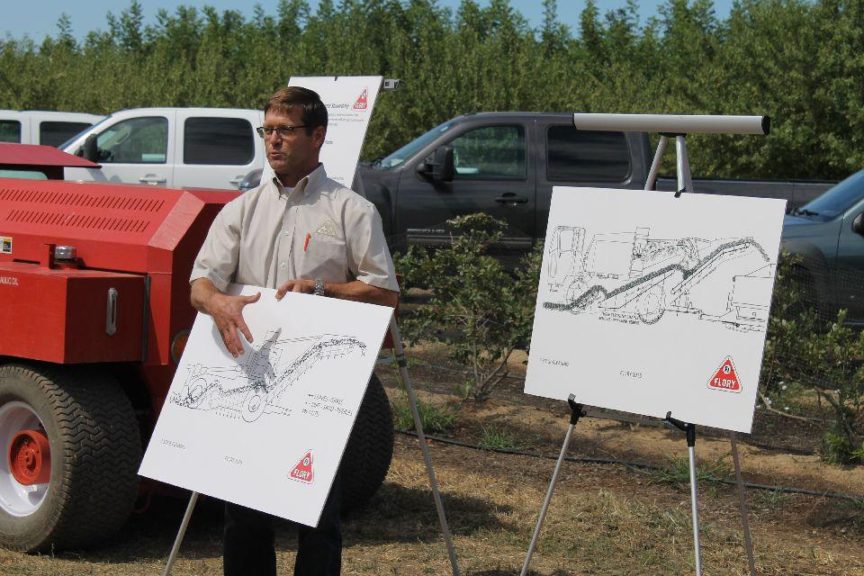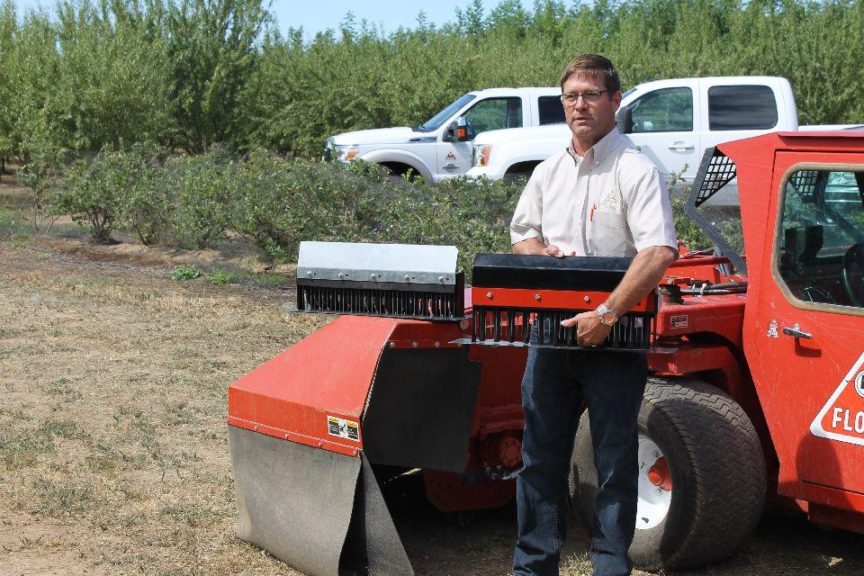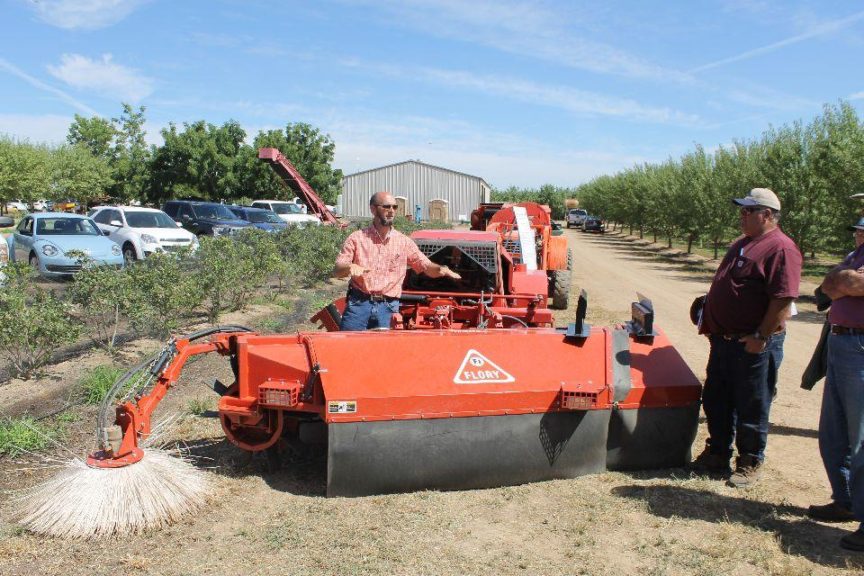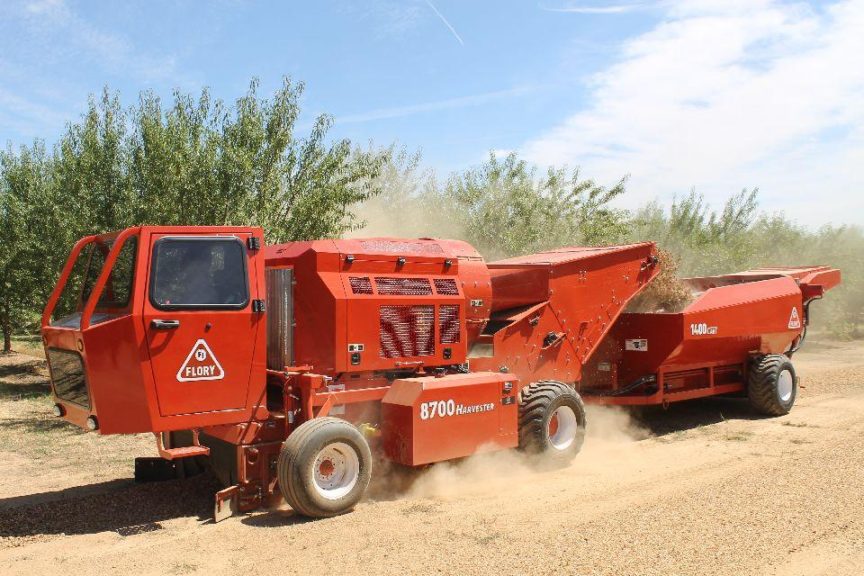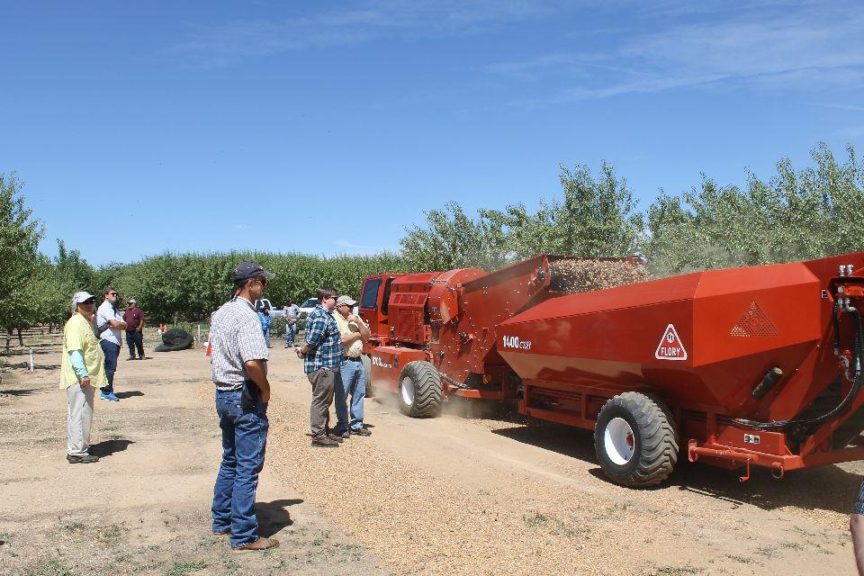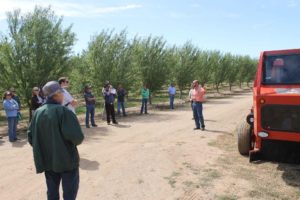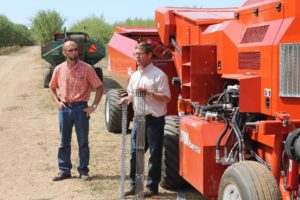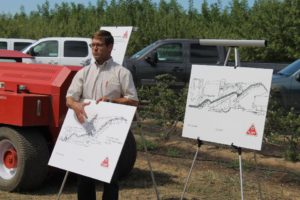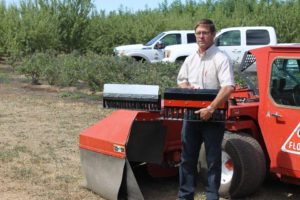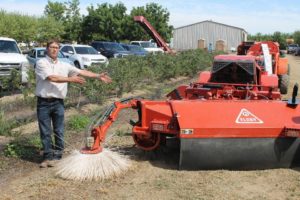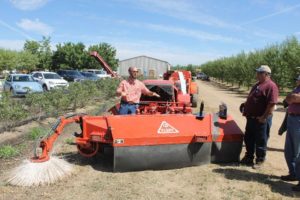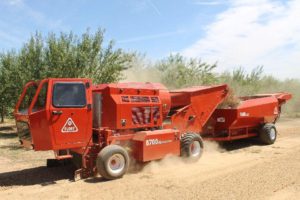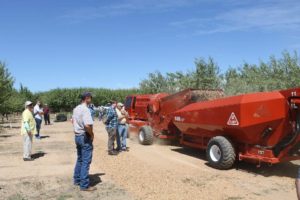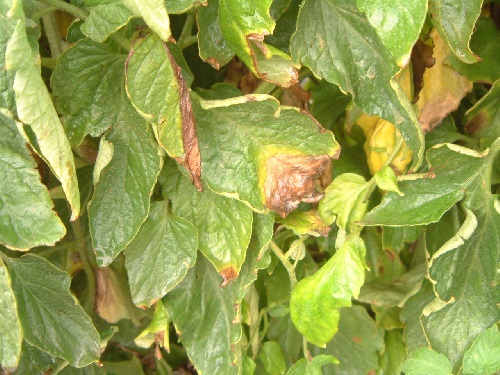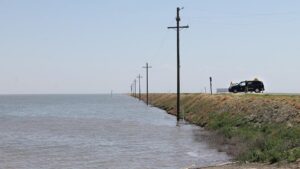Don’t Bite The Dust In Your Almond Orchard
[blackoutgallery id=”132383″]
Anything that cuts the dust in an almond orchard is better for your equipment, the community at large, and the reputation of your industry, said Franz Niederholzer, opening a recent equipment demonstration at the Nickels Soil Lab in Arbuckle, CA.
Niederholzer, a University of California Cooperative Extension farm advisor, was one of several speakers at the demonstration, held as part of the Almond Board of California’s Sustainability Workshop Series. All of them emphasized that growers need to do all they can to cut down on dust.
“Nothing is positive about dust,” Niederholzer said, “but it’s a by-product of what we do.”
Mike Flora, the engineering manager at Flory Industries of Salida, CA, said part of the problem is that growers have become accustomed to generating a lot of dust.
“Historically, harvesters were built for the worst-case scenario, generating as much air flow as possible to clean up the product,” he said.
But with today’s modern equipment, you can use gravity as well as air flow to clean the almonds, Flora said, and with the on-board computer you can precisely control the air flow.
“Hit the ‘enviro’ mode and it will limit the speed to 3 mph; you can’t go faster no matter what,” he said, adding that the units have settings for walnuts and pecans as well. “You can get by with a lot less fan than was previously known.”
The reasons for high air flow was to make sure as few almonds as possible got left in the field, and because when you go faster air flow is generally greater, and time is money, after all.
“It’s tough to slow down, but at least do it in certain areas like near schools or adjacent to roads,” Niederholzer said. “For example, if you’re short on trailers, go 1.5 mph instead of 3 mph – there’s no reason to hurry up and wait.”
Also, while no one likes to see nuts left in the field, a clean harvest is more a result of good orchard floor preparation than running the harvester hard, said Stuart Layman, who works in sales at Flory.
“If you’re digging a rut, you’re going too deep,” he said. “And if you set the equipment for lower than needed, you will wear the machine out sooner than necessary, which costs you money.”
Added Flora: “And if you pull back on engine RPM you’ll not only have less dust, but you’ll also have more money in your pocket because you’re using a lot less fuel.”
Besides, in the grand scheme of things, Niederholzer said, taking the environment into account is a lot better for the industry’s public image.
“One mistake brands an industry,” he said. “You want people to think, ‘Boy those nuts are great for our economy,’ not ‘Oh no, there’s a dust cloud.’”




